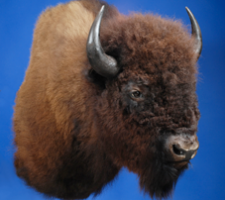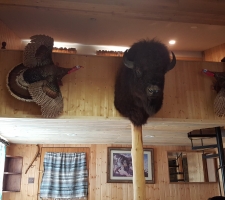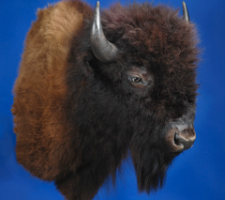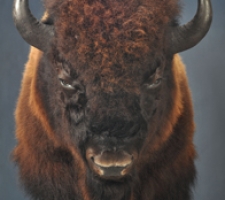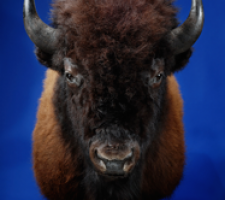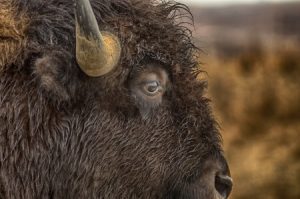
The heaviest land mammals in North America, American bison can weigh over 2,000 pounds and stand over 6 feet tall. Though grand and powerful creatures, bison, often referred to as buffalo, are herbivores that graze on grasses and shrubs, and despite their size, they can run up to 40 miles per hour.
Gentle yet stubborn giants, American bison often represent the old American West.
In the 1500s, about 30 to 60 million bison lived in North America. Bison proved historically important to many Native American tribes who used almost every part of the animal for food, clothing, toys, medication, dishes, instruments, and more. As Native American tribes evolved and began hunting more vigorously with guns, they killed larger numbers of bison. During the 1860s construction of the railroads, bison were killed off for food to feed hungry builders and the swarms of hunters coming in by train. The railroads divided the buffalo into a northern and southern herd.
Demand for bison hides, skins, and bones rose in the 1870s and people started hunting bison on a regular basis. Mass killing bison for sport became a popular hobby. By 1876, the southern herd formed by the railroad was gone. By 1883, nearly all the bison were gone from the United States except for about 325 animals.
Through recovery efforts, private herds, and legislation, the population of North American buffaloes grew back to about 12,500 by 1919. By the end of the 1990s, public herds accounted for about 20,000-25,000 bison in North America while private herd numbers grew to at least 250,000 bison.
Today, about 500,000 bison inhabit preserves and ranches in North America. Only about 4% of total bison roam the plains in North America today; the other 96% of the population are livestock animals raised for meats and hides.
Enthralled with their majestic size and beauty, many people choose to display bison mounts, bison skulls, and buffalo horns.
Let Bighorn Taxidermy show you the difference an experienced taxidermist can make in creating a true trophy mount!




